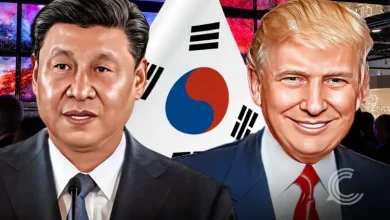The Irony of Indebtedness: Why the US is China’s Biggest Borrower

Key Points:
- A recent study indicates the United States is the biggest recipient of state-backed Chinese loans globally, surpassing developing nations
- This credit, totaling over $200 billion between 2000 and 2023, often funds projects in strategic infrastructure and key high-tech sectors within the U.S. economy
- The use of offshore shell companies and opaque financing methods masks the extent of this financial exposure, creating a hidden National Security Risk
For years, Washington has issued stern warnings to developing nations about the dangers of accepting debt from Beijing, cautioning against the potential for a “debt trap” that can compromise national sovereignty. Yet, a study by AidData, a research lab at William & Mary, reveals a startling irony: the United States has been the largest global recipient of credit from Chinese state-owned entities, receiving over $200 billion across nearly 2,500 projects between 2000 and 2023.
This finding demands an urgent, non-partisan reassessment of American financial resilience and a recognition of the profound National Security Risk that hidden capital flows now pose.
A Strategic Shift in Global Lending
This staggering figure, which includes financing for LNG projects in Texas, data centers in Northern Virginia, and airport terminals in New York and Los Angeles, highlights a dramatic shift in China’s global lending strategy. While the early focus was on the Global South through the Belt and Road Initiative, the new direction targets high-income countries and strategic sectors vital to technological competition.
As AidData’s executive director, Brad Parks, commented, “Washington has been warning other countries about debt exposure to China [but] there’s quite a lot of inbound lending from Chinese state-owned creditors to borrowers in the U.S.,” as reported by The Washington Post. This lending is not merely benign foreign investment, it is an instrumental, state-directed effort to secure supply chains, acquire critical technology, and embed China’s financial interests deeply into the industrial fabric of its chief economic rival.
The Concealed National Security Risk
The most alarming aspect of the AidData report is the opacity of these transactions. Much of this lending to U.S. businesses and projects is channeled through offshore financial vehicles, including shell companies in jurisdictions like the Cayman Islands and Delaware, deliberately obscuring the true origins and ultimate controllers of the capital. This lack of transparency transforms economic exposure into a genuine National Security Risk.
Former White House investment adviser William Henagan articulated this concern clearly, saying, “China was playing chess while the rest of us were playing checkers.” He argues that this hidden lending network grants China a potential “chokehold on technologies,” cautioning that “Wars will be won or lost based on whether you can control products critical to running an economy,” as reported by The Associated Press. Projects tied to semiconductors, biotech, and critical infrastructure become financially intertwined with a geopolitical adversary, creating vulnerabilities that could be exploited during a crisis or trade dispute.
Policy Failure and the Path Forward
The sheer scale of this $200 billion exposure suggests a significant policy failure in the U.S. screening mechanisms, particularly concerning foreign investment reviews. While the Committee on Foreign Investment in the U.S. (CFIUS) was designed to protect strategic sectors, the report suggests that China’s sophisticated use of offshore finance has allowed it to work around these barriers. This is not simply about government debt, which is a separate but related issue; this is about state-backed credit extending into private, commercial ventures that affect national interest.
To mitigate this systemic National Security Risk, the U.S. must act decisively. Firstly, Congress should mandate greater transparency in foreign credit reporting, especially for loans channeled through offshore financial centers that fund critical domestic infrastructure and high-tech acquisitions.
Secondly, CFIUS must be empowered and resourced to more aggressively trace the ultimate source of capital in major cross-border transactions, extending its scrutiny beyond equity investment to debt financing. Furthermore, the U.S. must reinvigorate its own development finance institutions to offer competitive financing alternatives, ensuring that critical domestic projects are not reliant on capital from a geopolitical competitor.
The lesson is stark: the United States must stop merely cautioning others about Chinese debt practices and, instead, urgently address the hidden financial dependencies that now compromise its own strategic and economic stability. This is a challenge to which policymakers must respond with immediate action.



